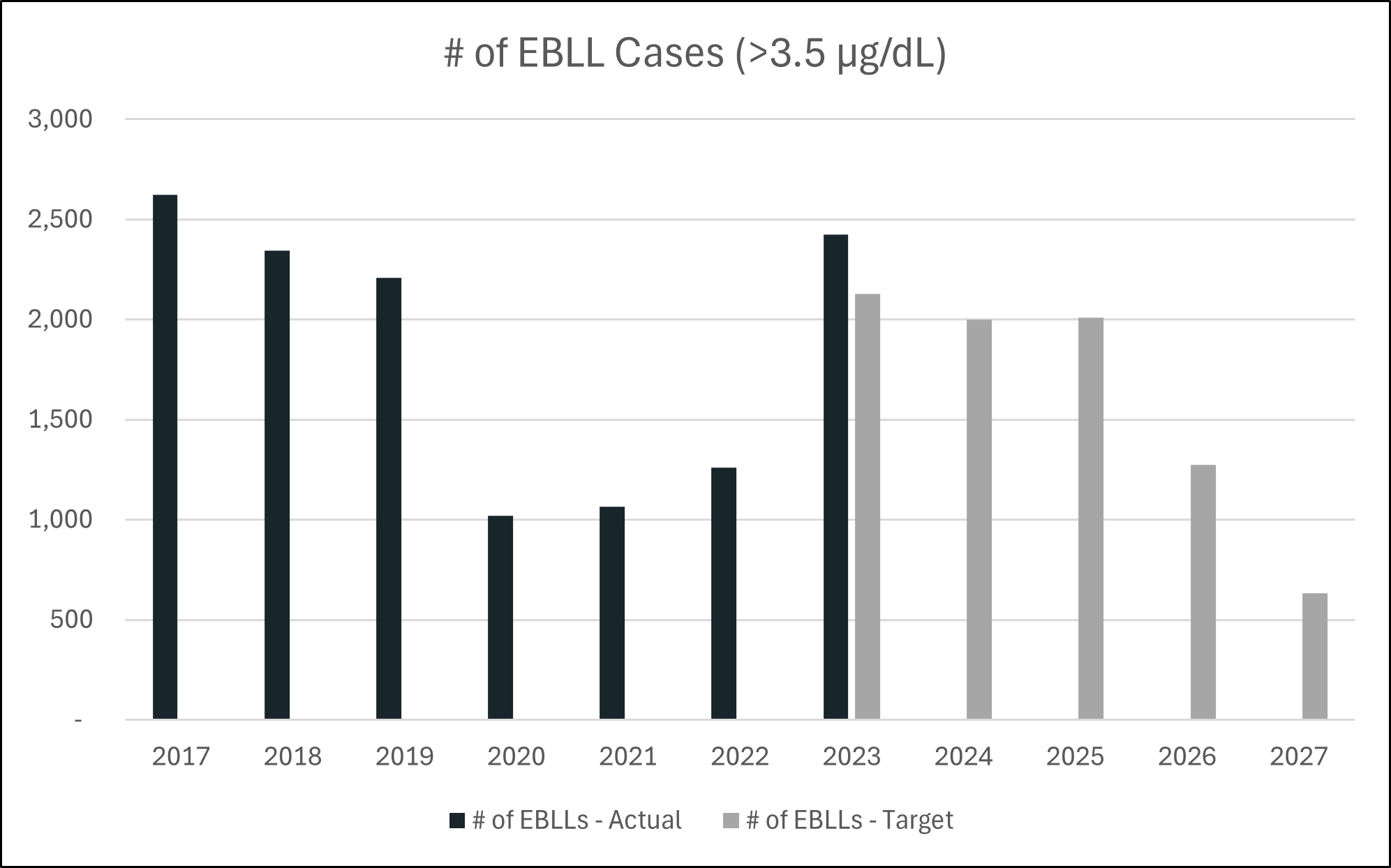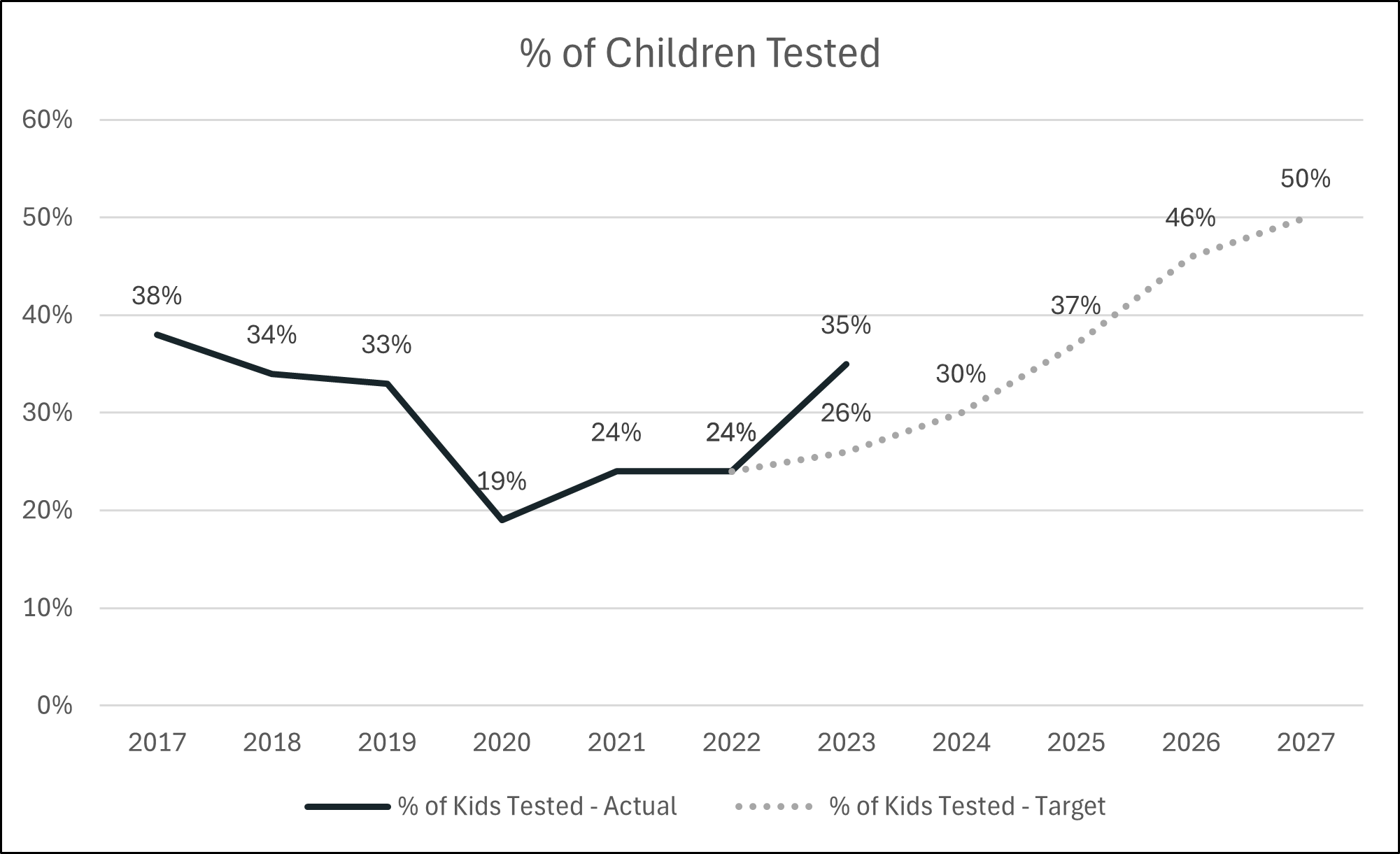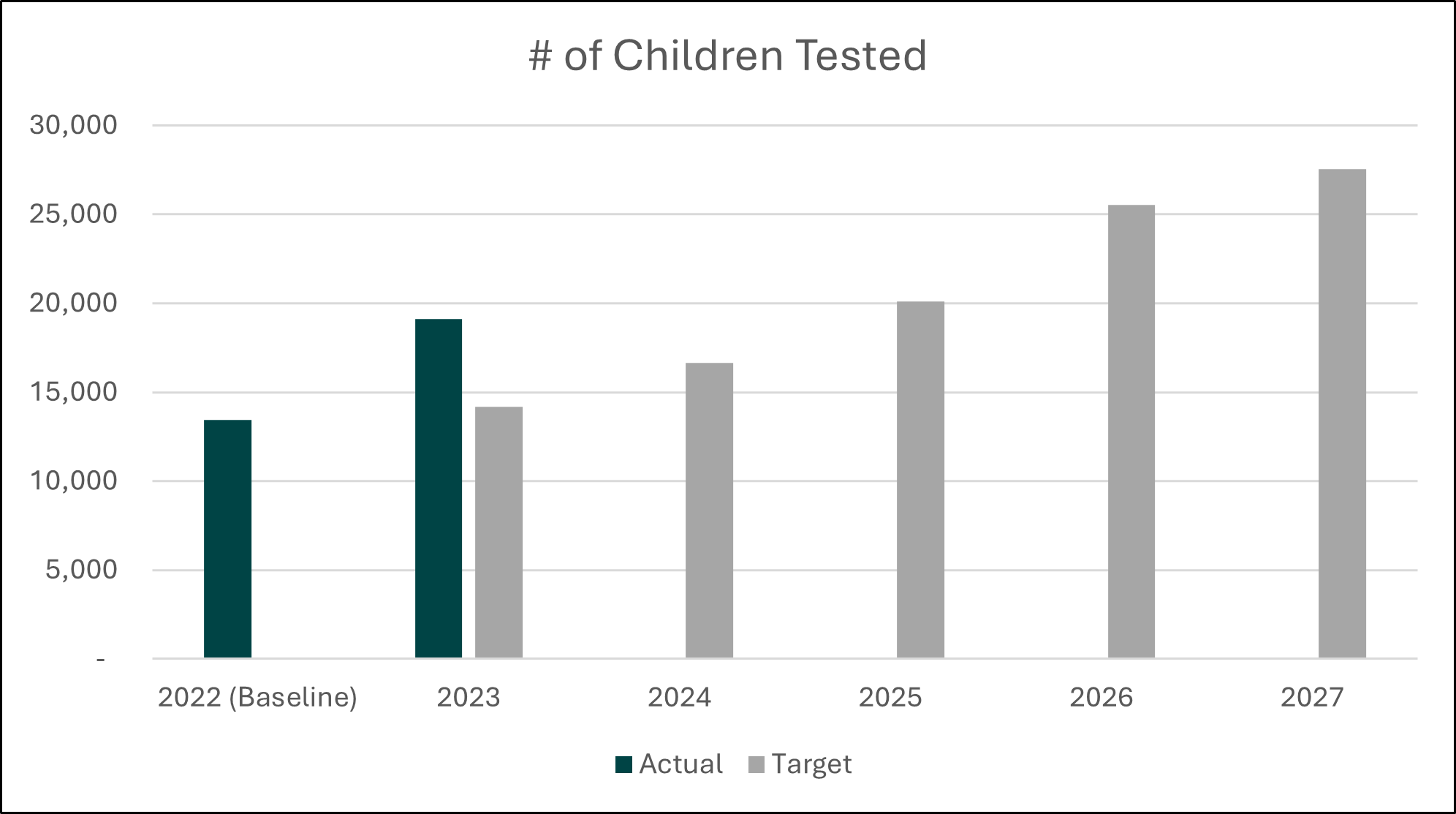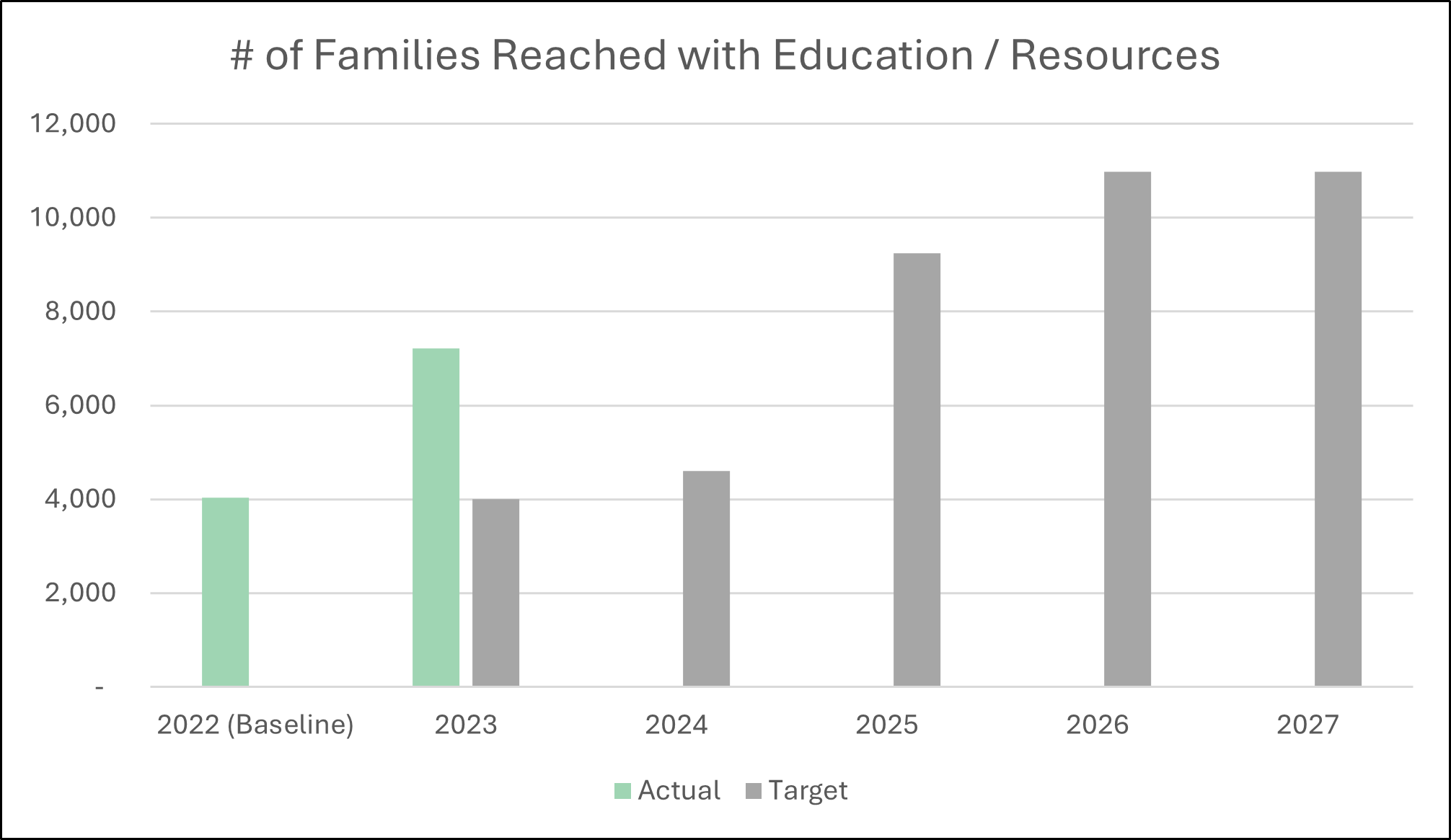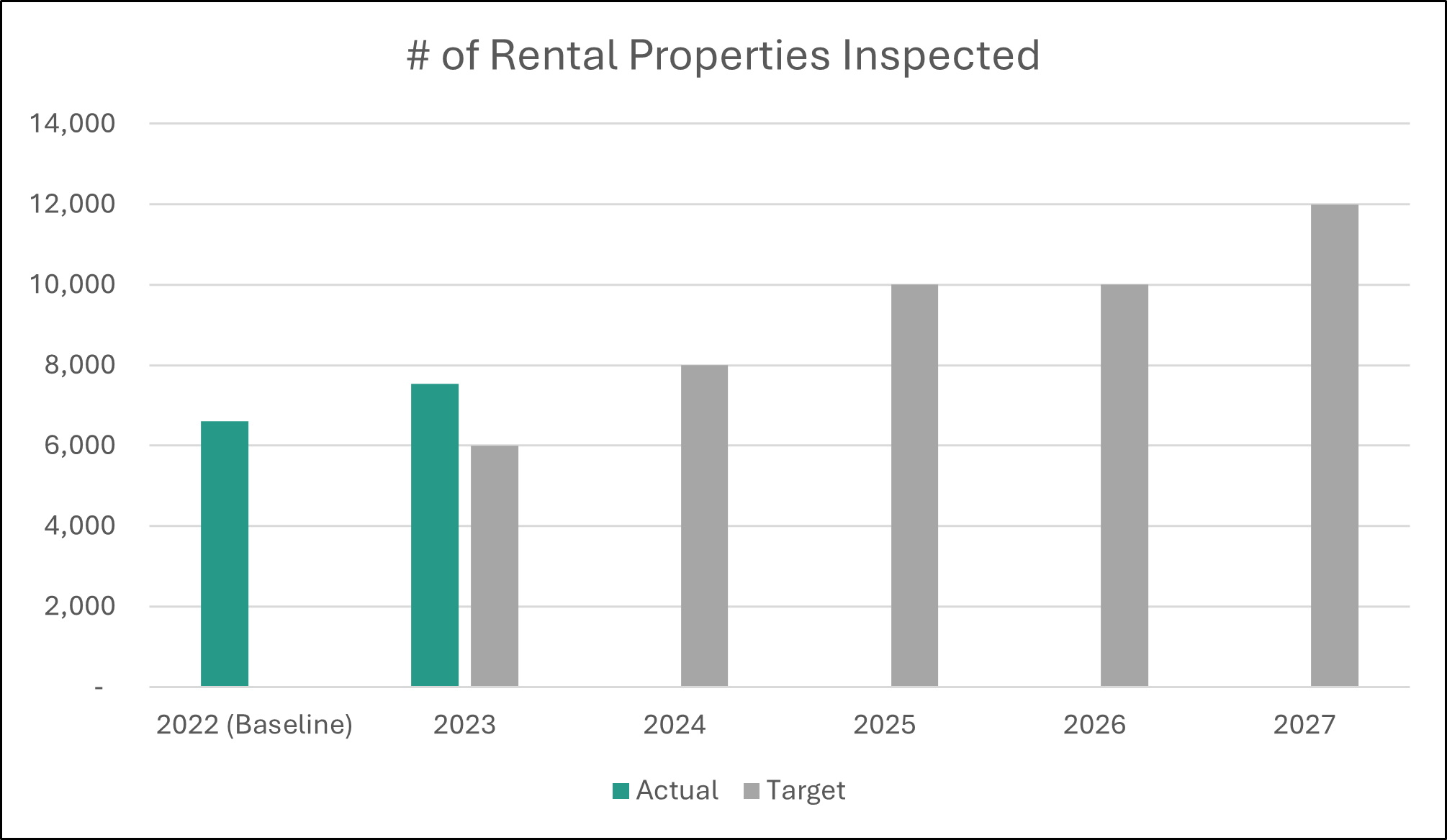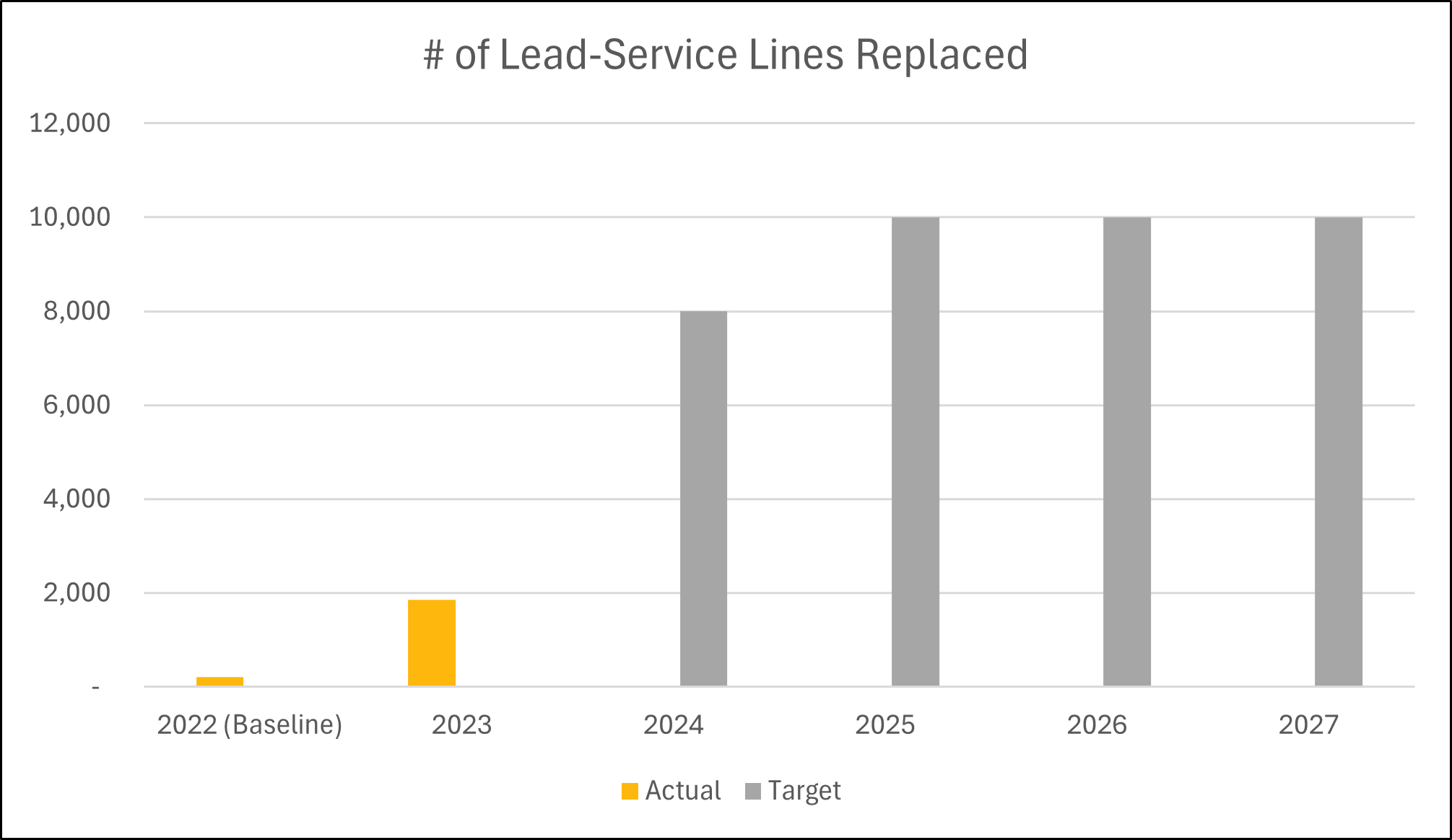Para obtener información actualizada, visite detroitmi.gov
Lead Task Force
EXECUTIVE SUMMARY
The Detroit Lead Reduction Task Force (Lead Task Force) aims to reduce toxic lead exposure among Detroiters, particularly children, by working collaboratively across city departments and with community partners. Specifically, the Task Force aims to achieve the following goals by 2027:
- Reduce annual cases of elevated blood-lead levels (EBLLs) by 50%, and
- Increase testing rate for elevated blood-lead levels (EBLLs) to 50% of children
TASK FORCE MEMBERSHIP
The Lead Task Force is comprised of members from the following City departments:
- Buildings, Safety Engineering, and Environmental Department (BSEED)
- Detroit Health Department (DHD)
- Detroit Water and Sewerage Department (DWSD)
- Housing and Revitalization Department (HRD)
- Mayor’s Office
- Office of Development and Grants (ODG)
STRATEGIES
To achieve its goals, the Lead Task Force has adopted the following strategies:
| Strategy | |
|---|---|
| 1 | Increase testing for EBLLs for children across Detroit |
| 2 | Increase outreach efforts to educate families about lead poisoning prevention |
| 3 | Improve housing and infrastructure quality through increased inspections and repairs |
| 4 | Strengthen data practices to target outreach and resources most effectively |
| 5 | Coordinate temporary or permanent housing for children with EBLLs |
| 6 | Coordinate public funding and pursue philanthropic support |
ADVISORY COMMITTEE
The Lead Task Force recognizes the importance of collaboration across the public, private, and non-profit sectors to address lead hazards and the value of expertise offered by external voices and perspectives. The Task Force, therefore, will establish a Lead Advisory Committee comprised of individuals with: 1) technical experience, professional experience, or lived experience related to lead poisoning prevention, 2) experience engaging with children, or 3) experience fundraising for sizeable initiatives. The Advisory Committee will meet quarterly with the Lead Task Force to review progress on lead poisoning prevention and make recommendations for additional public and private actions to improve resident health outcomes.
The Lead Advisory Committee is expected to consist of 5-10 members. All nominations should be submitted via email to [email protected] by July 31, 2024; nominations should identify the individual's name, contact information, relevant experience, and neighborhood of residence (or city if outside Detroit). The Task Force will then select committee members from among the nominations. Committee members are expected to serve for a two-year term.
DASHBOARD
Graphs updated annually; full year's data to populate March of the following year.
Columns reflect number of EBLL cases. Black columns reflect actuals. Grey columns reflect Task Force’s targets for the 5-year period 2023-2027. 2027 EBLL goal is a 50% reduction from 2022’s level.
2020-2022 dip in testing (see next graph), and by extension identified EBLL cases, is a result of COVID-19 disruptions.
All things remaining constant, increasing the testing rate will increase the number of EBLL cases detected. The Task Force’s EBLL reduction goal, therefore, is doubly aggressive, as it not only aims to reduce number of EBLL cases, but to do so as it increases testing.
Line graph reflects percent of children tested for EBLL. Black line reflects actuals. Grey dashed line reflects Task Force’s targets for the 5-year period 2023-2027. 2027 testing goal is 50% of children.
2020-2022 dip in testing is a result of COVID-19 disruptions.
All things remaining constant, increasing the testing rate will increase the number of EBLL cases detected. The Task Force’s EBLL reduction goal, therefore, is doubly aggressive, as it not only aims to reduce number of EBLL cases, but to do so as it increases testing.
Columns reflect number of children tested for EBLLs. Green columns reflect actuals. Grey columns reflect Task Force’s targets for the 5-year period 2023-2027. 2027 target is to test 27,000 children, which equates to 50% of children.
Columns reflect number of families reached with educational materials and/or resources related to lead poisoning prevention. (Resources include repair grants, trainings, guidebooks, etc.) Light green columns reflect actuals. Grey columns reflect Task Force’s targets for the 5-year period 2023-2027. 2023-2027 cumulative target is to reach 35,000 families.
Historically, the City’s resources have been concentrated in lead repair grants (i.e. high investment in a limited number of homes). Expanding to include lower dollar-amount resources, can achieve a broader reach.
Columns reflect number of rental properties inspected by BSEED or third-party inspection company. Teal columns reflect actuals. Grey columns reflect Task Force’s targets for the 5-year period 2023-2027. 2027 target is to inspect 12,000 properties.
Columns reflect number of lead-service lines replaced by DWSD or third-party. Yellow columns reflect actuals. Grey columns reflect Task Force’s targets for the 5-year period 2023-2027. 2027 target is to replace 10,000 service lines.
All available funds were exhausted in 2023. The Task Force notes that funding will be a key driver in its ability to meet its 2024-2027 targets.
BACKGROUND
Lead is a toxic metal that, once in the bloodstream, can lead to a range of health problems, especially in children whose bodies are still developing. Such health problems include damage to the brain and nervous system, slowed growth and development, learning and behavior problems, hearing and speech problems, and underperformance in school. While medical experts confirm that there is no safe amount of lead in a child’s system, an elevated blood-lead level (EBLL) refers to a person’s blood-lead level being above a threshold (known as the blood-lead reference value or BLRV) set by the CDC. Blood-lead levels are measured in micrograms of lead per deciliter of blood (μg/dL).
The table below provides data on the number of children tested for EBLL and the number of new EBLL cases from 2017 – 2022. Data on testing, new EBLL cases, and hospitalizations due to toxic lead exposure are sourced from MDHHS and were used to set the aligning goals for this Task Force’s work. Since 2020, the scale of testing and the number of new reported EBLL cases has been drastically lower due to the disruptions caused by the COVID-19 pandemic.
| 2017 | 2018 | 2019 | 2020 | 2021 | 2022 | |
|---|---|---|---|---|---|---|
| # of children | 59,381 | 58,795 | 58,458 | 58,254 | 55,050 | 55,050 |
| # of children tested |
22,289 (37.5%) |
19,927 (33.9%) |
19,282 (33.0%) |
10,953 (18.8%) |
12,947 (23.5%) |
13,456 (24.4%) |
| # of EBLL cases | 2,623 | 2,343 | 2,209 | 1,021 | 1,064 | 1,261 |
In May 2021, the CDC lowered its blood-lead reference value (BLRV) from 5 µg/dL to 3.5 µg/dL to reflect the latest research on lead poisoning prevention. The Task Force has accounted for this change in the setting of its citywide goals.
Like many challenges in Detroit, toxic lead exposure does not affect all neighborhoods in the same way. Neighborhoods with more low-income residents and residents of color are disproportionately affected. The map below highlights the neighborhoods that have the greatest concentration of new EBLL cases. The Task Force will prioritize these neighborhoods in its work.
In 2022, Detroit city government established the Detroit Lead Reduction Task Force with representation from multiple City departments that work on lead-related issues. Prior to the formation of the Task Force, City of Detroit leaders met with senior officials from other cities to learn about strategies they employed to successfully reduce toxic lead exposure. Following this listening tour, Detroit leaders reviewed the City’s existing strategies to addressing toxic lead exposure, and identified ways to strengthen these strategies and adopt approaches from other cities. The main output of these meetings was this Charter, which sets out goals and strategies for reducing toxic lead exposure, and ways for the Task Force to collaborate and hold itself accountable to its mission and to Detroiters.

